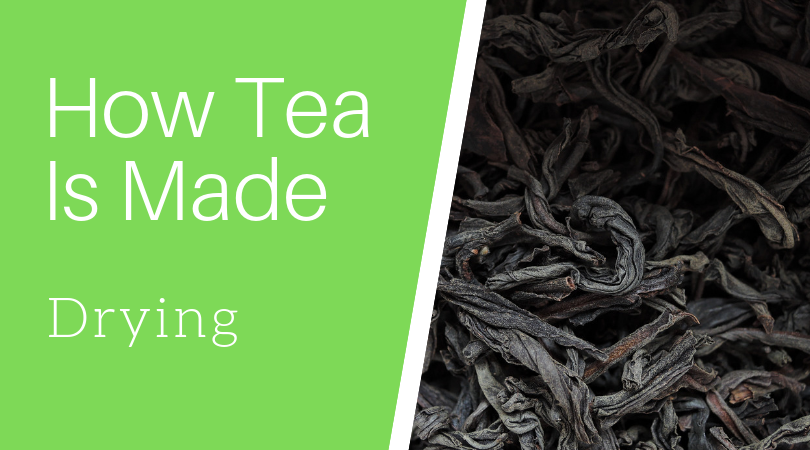This is the sixth post in a series where I will be breaking down each of the steps that tea undergoes, from leaf to cup. Check out last week’s post to learn about fixing.
We’ve covered the basic processing steps of tea over the course of the last few weeks. Examining everything from harvesting to oxidation and rolling has given me a newfound appreciation for the work that goes into a cup of tea. A tremendous amount of effort goes into even the lowliest tea bag.
Why is tea dried?
Just like herbs or any other kind of vegetal matter, processed tea leaves must be dried in order to make them shelf stable. The goal is to reduce the amount of moisture in the leaves to approximately 2 or 3%. Otherwise, they would quickly become rotten or moldy.
Leaves that are dried too slowly or too quickly it can negatively affect the taste of the finished tea. If a tea has been improperly dried you may notice a sour note or harsh bitterness. This is different from the musty aromas that many people dislike in shou puerh.
It is important to keep in mind that drying is a separate processing step than roasting. Even the greenest of oolongs will need to be dried in order to fully stop oxidation. All teas will still slowly change, with greener teas going stale faster. Tea does not go bad but it will lose its aromas over time.

Santo Chino: Flickr
How tea is dried?
The traditional method of dried tea used the heat of the sun. This is still practiced for white tea and puerh, though increasingly less often. Hot air is typically employed through the use of perforated conveyor belts and convection ovens. Charcoal firing is less commonly used in part because it takes a great deal more skill to do correctly. If overdone, the resulting tea will unpleasantly smoky. Tea can also be dried using a fluidized bed.
This post concludes my series on tea processing. Is there something about tea that you’d like to know more about? Let me know about in the comments below! Your questions just might become my next blog post. 🙂

Very informative series of posts! Great job! Thanks for putting this all together!